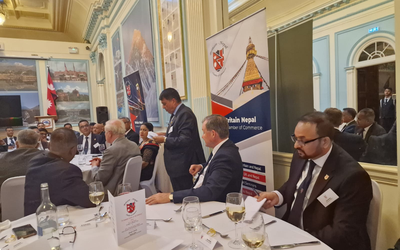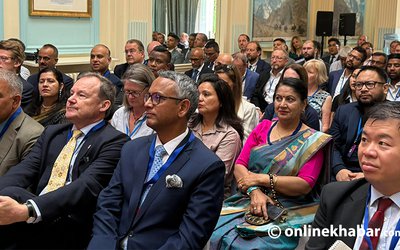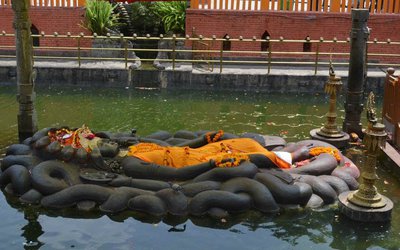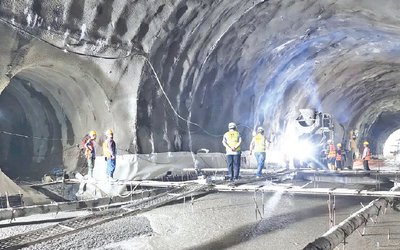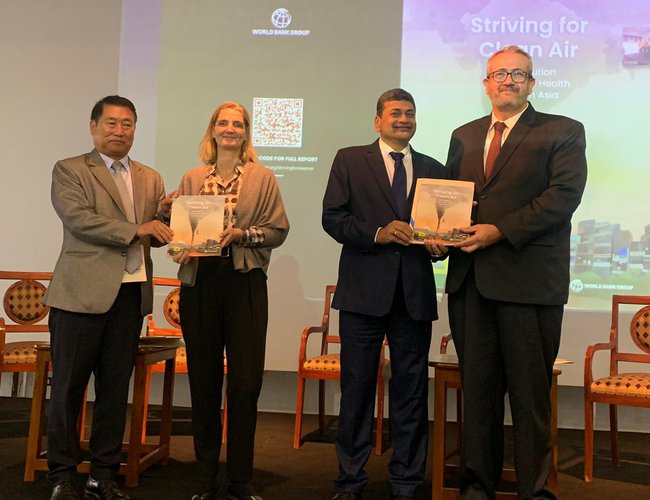
South Asia is home to 9 of the world’s 10 cities with the worst air pollution, which causes an estimated 2 million premature deaths across the region each year and incurs significant economic costs. A new World Bank report shows that there are economically feasible, cost-effective solutions to achieve clean air in the region, but this requires countries to coordinate policies and investments.
Striving for Clean Air: Air Pollution and Public Health in South Asia, released today, says concentrations of fine particulate matter such as soot and small dust (PM 2.5) in some of the region’s most densely populated and poor areas are up to 20 times higher than what WHO considers healthy (5 µg/mᶾ). Exposure to such extreme air pollution has impacts ranging from stunting and reduced cognitive development in children, to respiratory infections and chronic and debilitating diseases. This drives up healthcare costs, lowers a country’s productive capacity, and leads to lost days worked.
Large industries, powerplants and vehicles are dominant sources of air pollution around the world, but in South Asia, other sources make substantial additional contributions. These include combustion of solid fuels for cooking and heating, emissions from small industries such as brick kilns, burning of municipal and agricultural waste, and cremation.
Air pollution travels long distances— crossing municipal, state, and national boundaries—and gets trapped in large “airsheds” that are shaped by climatology and geography. The report identifies six major airsheds in South Asia where spatial interdependence in air quality is high. Particulate matter in each airshed comes from various sources and locations, for example less than half of the air pollution in South Asia’s major cities is produced within cities.
“Persistently hazardous levels of air pollution have caused a major public health crisis in South Asia that demands urgent action,” said Martin Raiser, World Bank Vice President for South Asia. “Curbing air pollution requires not only tackling its specific sources, but also close coordination across local and national jurisdictional boundaries. Regional cooperation can help implement cost-effective joint strategies that leverage the interdependent nature of air quality.”
Several South Asian countries have adopted policies to help improve air quality, but their focus on mitigating air pollution generated within cities is yielding insufficient results. The report shows that current policy measures will only be partially successful in reducing PM 2.5 concentrations across South Asia even if fully implemented. To achieve greater progress, the focus of policy makers should expand into other sectors, particularly small manufacturing, agriculture, residential cooking, and waste management.
The report analyzes four scenarios to reduce air pollution with varying degrees of policy implementation and cooperation among countries. The most cost-effective scenario, which calls for full coordination between airsheds, would cut the average exposure of PM 2.5 in South Asia to 30 µg/m³ at a cost of $278 million per µg/mᶾ of reduced exposure, and save more than 750,000 lives annually.
“The economic benefits of policies to reduce air pollution in South Asia exceed the economic costs by a large margin,” said Hans Timmer, World Bank Chief Economist for South Asia. “But optimal solutions depend on several factors such as better monitoring systems, more scientific capacity, greater coordination between governments, and behavioral change among farmers, small firms, and households.”
To this end, the report offers a three-phased roadmap:
Phase 1: Sets the condition for airshed wide coordination by expanding the monitoring of air pollution beyond the big cities, sharing data with the public, creating or strengthening credible scientific institutes that analyze airsheds, and taking a whole-of-government approach.
Phase 2: Abatement interventions are broadened beyond the traditional targets of powerplants, large factories and transportation. During this phase major progress can be made in reducing air pollution from agriculture, solid waste management, cookstoves, brick kilns, and other small firms. At the same time, airshed-wide standards can be introduced.
Phase 3: Economic incentives are finetuned to enable private-sector solutions, to address distributional impacts, and to exploit synergies with climate change policies. In this phase trading of emission permits can also be introduced to optimize abatement across jurisdictions and firms.
- Nepal-UK Tech Forum Held
- Jul 06, 2025
- Hari Sayani or Devshayani Ekadashi 2025: Day Of Tulsi Plantation
- Jul 06, 2025
- Siddhababa Tunnel Makes A Major Milestone
- Jul 06, 2025
- Weather Forecast: Generally Cloudy Across The Country With Heavy Rain At One Or Two Places Gandaki, Bagmati and Koshi Provinces
- Jul 06, 2025
- India’s External Affairs Ministry’s Senior Officials Says Indo-Nepal relations are ever expanding
- Jul 05, 2025
